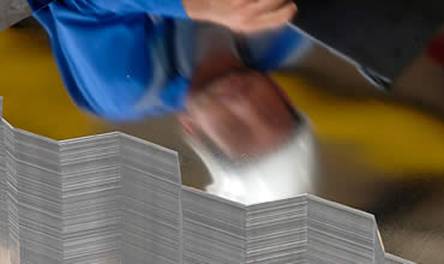Tin plating is the process of applying a layer of tin to another metal. In the context of tinplate used for the manufacture of metal containers, tin plating refers to the application of tin on a steel base to protect it from external corrosion. Tin is a soft, white, shiny metal with an atomic mass of 118.7 and a relatively low melting point, making it resistant to corrosion and therefore ideal as a protective coating for metals. In the production of tinplate, which is a material commonly used in the manufacture of canned food containers, tin plating is performed to protect the steel from corrosion and to improve the appearance and resistance of the container to external factors. The tin content in tinplate is variable, and modern production methods allow the thickness of the steel and the weights of the tin coating to be precisely controlled.














